The large white flowers of Texas wild olive (
Cordia boissieri), borne on attractive dark green foliage, herald spring’s arrival. This beautiful Texas native is tough and easily handles what nature brings its way, whether it’s intense reflected heat or drought.
Texas wild olive is quite versatile and can be grown as a large shrub or trained into a small tree, providing deep green color to the Southwestern landscape. Its needs are few, and it is a must-have for an attractive, low-maintenance landscape.
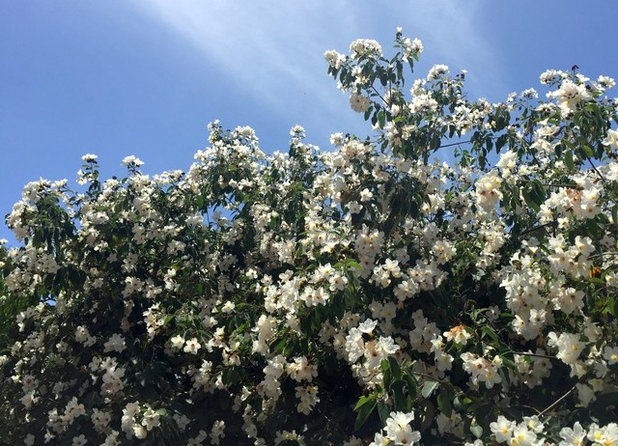
Noelle Johnson Landscape Consulting
Botanical name: Cordia boissieriCommon name: Texas wild olive, anacahuita, Mexican olive
Origin: Native to the Rio Grande Valley area of Texas and northeast Mexico
Where it will grow: Hardy to 20 degrees Fahrenheit (USDA zone 9; find your zone)
Water requirement: Drought tolerant once established; flowering is enhanced with regular irrigation
Light requirement: Full or reflected sun
Mature size: 10 to 25 feet tall and wide
Benefits and tolerances: Drought tolerant
Seasonal interest: Large white flowers in spring and sporadically in summer and fall
When to plant: Fall or spring
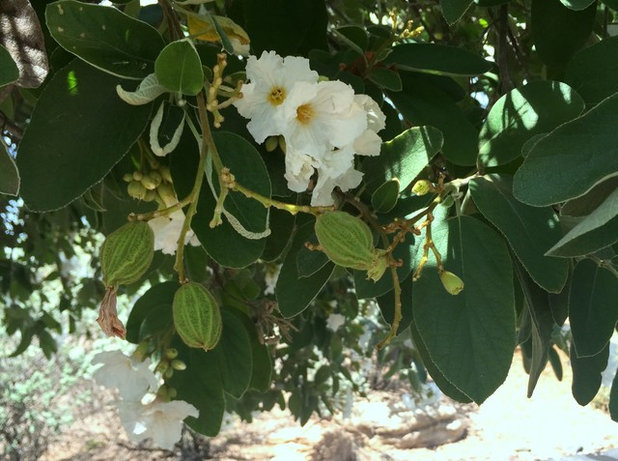
Noelle Johnson Landscape Consulting
Distinguishing traits. It is rare to find a Southwestern native with large dark green leaves that thrives in full sun, making Texas wild olive a valuable option for this region’s plant palette. The 5-inch-long leaves are soft and leathery, with a lighter underside.
The 2½-inch-wide trumpet-shaped flowers with yellow centers are perhaps this Southwestern native’s most obvious characteristic. It’s easy to mistake Texas wild olive for white flowering
oleander shrubs (
Nerium oleander) when in bloom. Flowering begins in spring and can continue into summer and fall. Fruit that resembles green olives is produced as the flowers fade, and then is eaten by birds.
Its growth rate is slow to moderate but can be increased by weekly watering in spring through fall. Weekly irrigation during the warm season will increase the amount of flowering. Temperatures in the mid 20s (Fahrenheit) will cause tip dieback, and Texas wild olive is deciduous when temperatures dip into the low 20s.
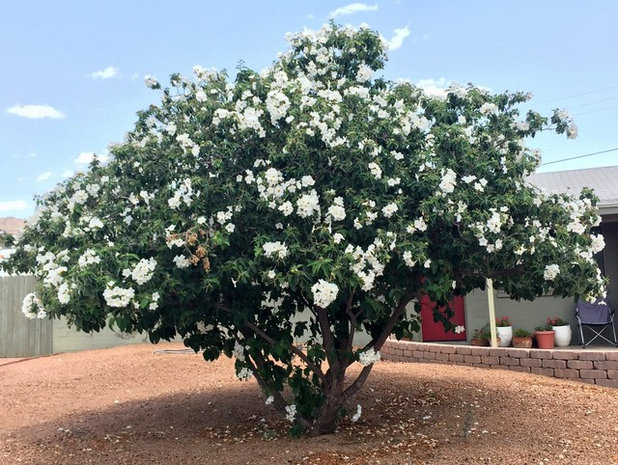
Noelle Johnson Landscape Consulting
How to use it. Whether grown as a large shrub or a small tree, Texas wild olive adds a welcome spot of dark green to the Southwestern landscape. Use it trained as a small tree in a courtyard or patio setting. It also is a great choice for anchoring the corners of a landscape.
While this dark green native is beautiful, it does produce litter when the flowers and fruit drop, so it is not suitable for planting near a swimming pool or water feature.
Plant flowering ground covers, such as autumn sage (
Salvia greggii), Blue Bells (
Eremophila hygrophana ‘Blue Bells’), damianita (
Chrysactinia mexicana) or purple trailing lantana
(
Lantana montevidensis) underneath, which will serve double duty by adding bright color and hiding any fallen flowers and fruit.
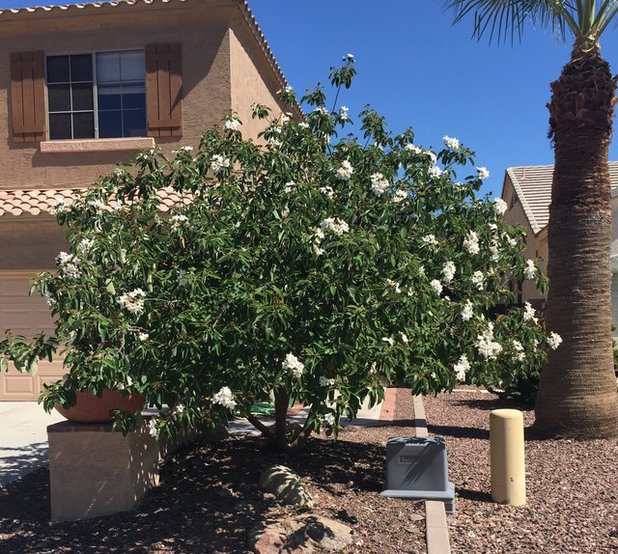
Noelle Johnson Landscape Consulting
When grown as a large shrub, Texas wild olive can be used to screen an unattractive view or break up the bare expanse of a fence or wall. In a natural desert setting, plant it toward the back of the landscape for an attractive backdrop.
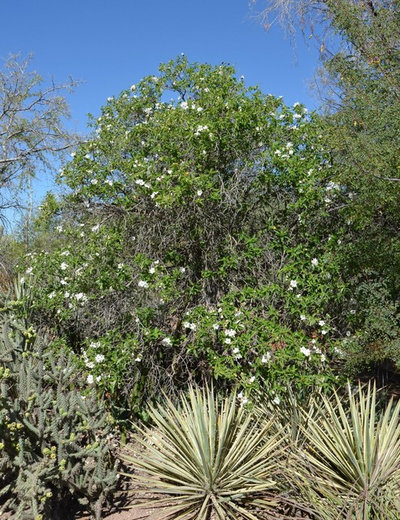
Noelle Johnson Landscape Consulting
Planting notes. Plant it in well-drained soil in a location that receives full sun — reflected sun is OK too.
In spring through fall, water every one to two weeks. Monthly watering is all that is needed in winter.
Minimal pruning is required, due to its slow growth, and should be limited to maintaining the tree’s shape (if desired) or removing any dead branches.
More:7 Spectacular and Practical Spring-Flowering Trees
Browse plants native to other regions of the U.S.





